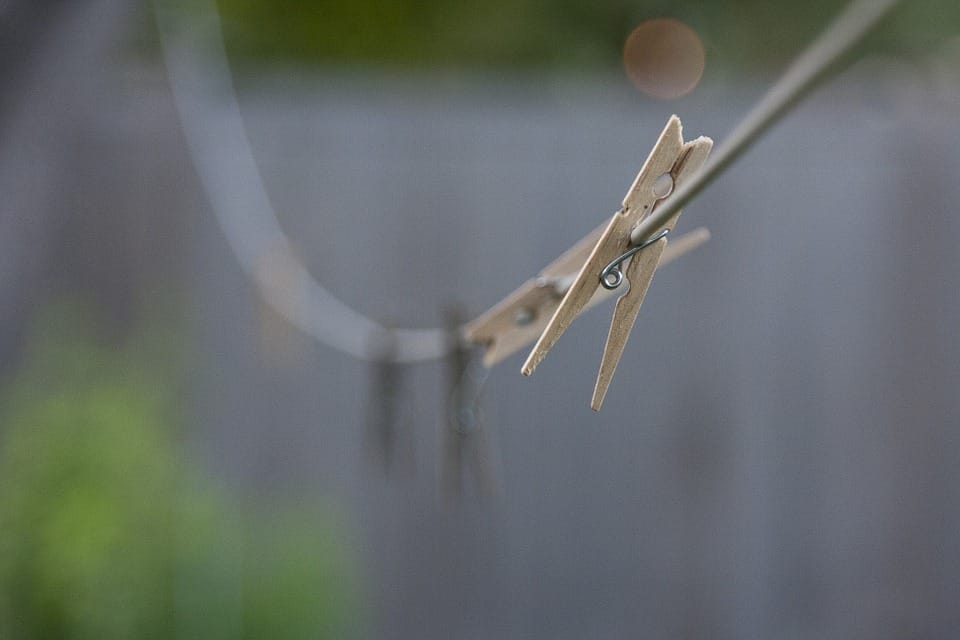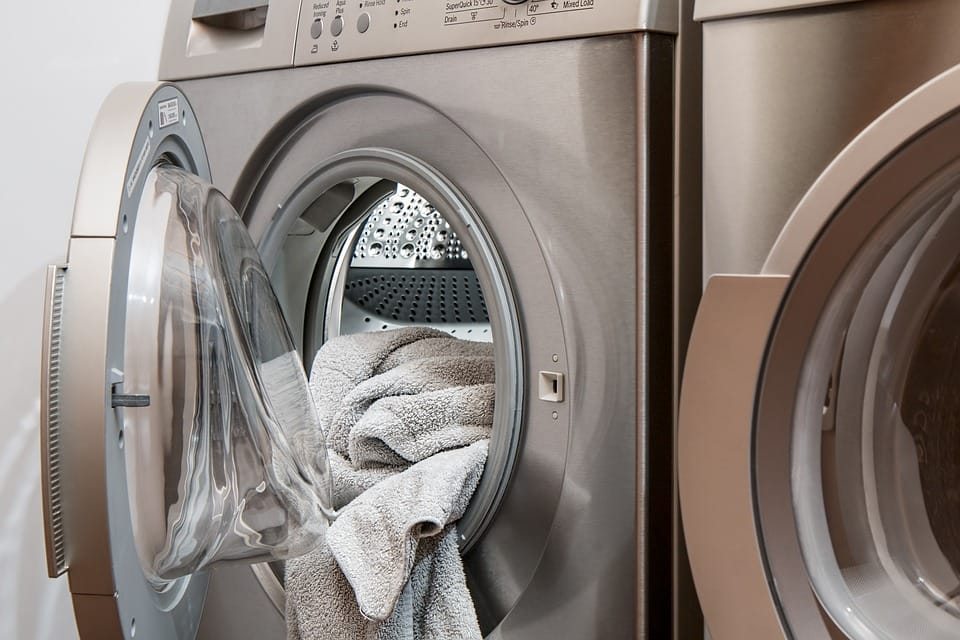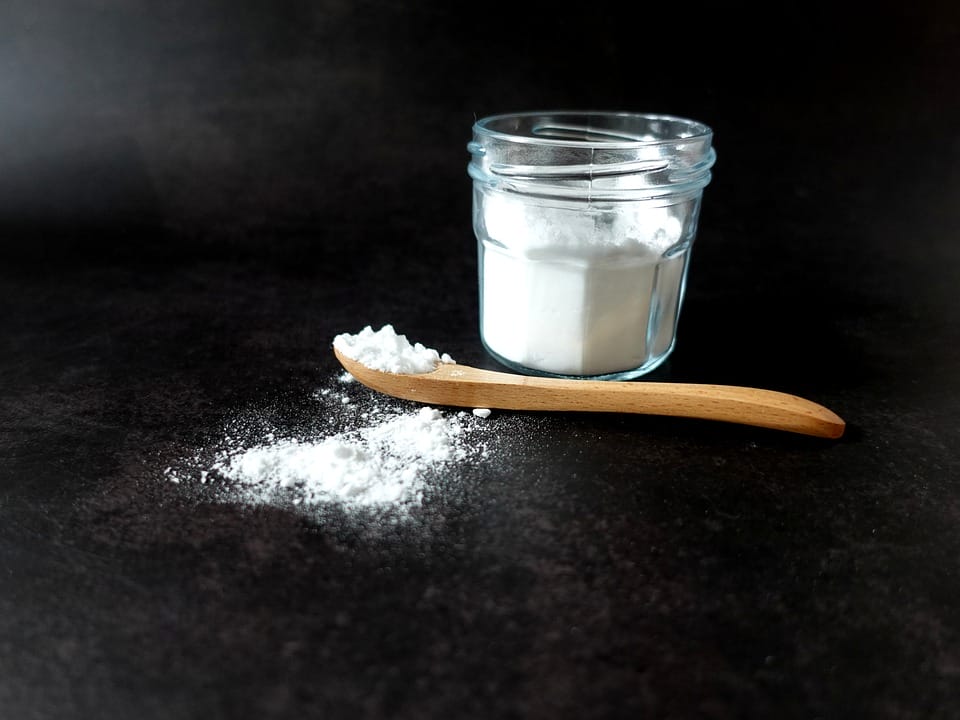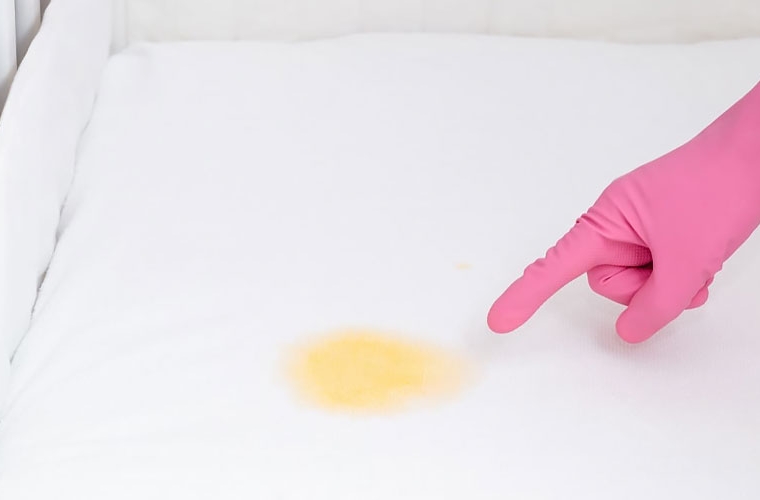How to Get Yellow Stains out of the Mattress Protector?
If you’re dealing with pesky yellow stains on your mattress protector, fret not! Stains can happen due to a variety of reasons, such as urine, vomit, sweat, and aging fabric. Luckily, there are effective ways to tackle these stains. One option is using a simple mixture of vinegar and baking soda, where you’ll spray the stain with a blend of equal parts vinegar and water, dab lightly, and repeat until the yellow color disappears.
Alternatively, you can opt for a commercial stain remover, just make sure to choose a mild detergent or stain remover and follow the provided instructions. Remember, acting quickly when there’s a spill is crucial for better stain removal. Once you’ve treated the stain, washing the mattress protector in a washing machine at low or cold temperatures with a mild detergent is recommended. For the safest drying method, air-drying the mattress protector is the way to go, but using a tumble dryer on low heat is also possible if needed.
By following these tips, you’ll be able to bid those yellow stains farewell and keep your mattress protector looking fresh and clean.

Understanding the Cause of Yellow Stains
Yellow stains are a common issue that many people face on their mattress protectors. These stains can be caused by a variety of factors, including urine, vomit, sweat, and the natural aging of fabric. Understanding the cause of these stains is the first step in effectively removing them.
Common reasons for yellow stains
Yellow stains on mattress protectors are often a result of bodily fluids such as sweat and urine. Sweat contains urea, a compound that can react with the fabric of the protector and cause discoloration over time. Similarly, urine contains uric acid, which can leave behind a yellowish stain if not promptly treated. Additionally, as fabric ages, it becomes more prone to discoloration, leading to the appearance of yellow stains.

Understanding how stains set in
Stains can quickly set into the fabric of a mattress protector if not treated promptly. When a spill occurs, the liquid can penetrate the fibers of the fabric, making it difficult to remove the stain. Over time, the stain becomes more ingrained and harder to eliminate completely. This is why it is crucial to take immediate action when a yellow stain appears on your mattress protector.
Role of sweat, urine, and aging fabric
Sweat and urine can both contribute to the development of yellow stains on mattress protectors. Sweat contains urea, which reacts with the fabric and causes discoloration. Urine, specifically the uric acid it contains, can also leave behind a yellowish stain. Additionally, as fabric ages, it becomes more susceptible to staining and discoloration. The combination of these factors can result in stubborn yellow stains that are challenging to remove.

Importance of Quick Action
Acting swiftly when a spill occurs is crucial in effectively removing yellow stains from a mattress protector. By taking immediate action, you can prevent the stain from setting into the fabric, making it easier to remove. If left untreated, yellow stains can become more stubborn and may require more extensive cleaning methods.
Why immediate action matters
When a spill occurs, the liquid can quickly penetrate the fibers of the fabric, making it difficult to remove the stain. By acting promptly, you can minimize the time the stain has to set in, increasing the chances of successful removal. Immediate action is especially important when dealing with urine stains, as the uric acid can cause significant discoloration if not treated promptly.

Long-term effects of untreated stains
If left untreated, yellow stains on a mattress protector can become more challenging to remove over time. The longer a stain remains on the fabric, the more it becomes ingrained and set in. This can result in permanent discoloration that cannot be fully eliminated, compromising the appearance and cleanliness of the mattress protector. Additionally, untreated stains can lead to the growth of bacteria and unpleasant odors, further impacting the hygiene of the mattress protector.
Preventing stain setting using quick action
To prevent stains from setting into your mattress protector, it is crucial to take immediate action when a spill occurs. Begin by blotting up any excess liquid with a clean cloth or paper towel. Then, treat the stain using one of the methods outlined in the following sections. By acting quickly, you can increase the effectiveness of stain removal and maintain the cleanliness of your mattress protector.

Using Vinegar and Baking Soda Mixture
Vinegar and baking soda are two household ingredients that can effectively remove yellow stains from a mattress protector.
Preparing the mixture
To create the vinegar and baking soda mixture, you will need equal parts of vinegar and water. Mix these ingredients in a spray bottle, ensuring they are thoroughly combined. The vinegar helps to break down the stain, while the baking soda provides a gentle abrasive action to lift the stain from the fabric.
Right way to spray the solution
When applying the vinegar and baking soda mixture to the yellow stain, it is important to spray it evenly and saturate the affected area. The spray bottle allows for precise application and ensures that the entire stain is treated. Avoid oversaturating the fabric, as this can prolong the drying time and potentially damage the mattress protector.
Repeating the procedure until the stain disappears
After spraying the vinegar and baking soda mixture onto the stain, lightly dab at it with a clean cloth or sponge. This helps to agitate the fabric and encourage the stain to lift. Repeat this process until the yellow color begins to fade and eventually disappears completely. It may take several applications to completely eliminate the stain, but with persistence, you can achieve a clean and stain-free mattress protector.
Using Commercial Stain Removers
Commercial stain removers can also be effective in removing yellow stains from a mattress protector. These products are specifically formulated to target and remove various types of stains.
Picking the right commercial stain remover
When choosing a commercial stain remover, it is essential to select one that is suitable for use on fabric and safe for your mattress protector. Read the labels and look for products that are specifically designed to remove stains from fabrics. Consider opting for a mild detergent or stain remover to ensure that it does not damage the fabric or leave behind any residue.
Understanding manufacturer’s guidelines
Once you have chosen a commercial stain remover, it is important to follow the manufacturer’s guidelines for application. Different products may have varying instructions, so be sure to read and understand them before use. Following the instructions meticulously will ensure that you achieve the best results without compromising the integrity of your mattress protector.
Repeated cycles of treatment if needed
If the first application of the commercial stain remover does not completely remove the yellow stain, do not be discouraged. Some stubborn stains may require repeated cycles of treatment to fully eliminate. Follow the manufacturer’s recommendations for reapplication, and with persistence, you can achieve a clean and stain-free mattress protector.
Machine Washing the Mattress Protector
In addition to spot-treating stains, it is important to regularly wash your mattress protector to maintain its cleanliness and longevity.
Choosing the right washing cycle temperature
When washing your mattress protector in a machine, it is best to choose a low or cold temperature setting. Higher temperatures can cause the fabric to shrink or become damaged. By selecting a gentle cycle, you can ensure that your mattress protector is thoroughly cleaned without compromising its integrity.
Selecting a mild detergent
When washing a mattress protector, it is important to use a mild detergent that is suitable for delicate fabrics. Harsh detergents can damage the fabric or leave behind residue that may irritate the skin. Look for detergents specifically labeled for use on delicate fabrics or those recommended for use on bedding items.
Correct load size and cycle setting
To ensure a thorough cleaning, it is important to correctly load the mattress protector into the washing machine. Avoid overloading the machine, as this can prevent adequate agitation and cleaning. Also, select the appropriate cycle setting for delicate fabrics to ensure gentle but effective cleaning.
How and Why to Air Dry?
After washing your mattress protector, it is vital to dry it properly to avoid any potential damage.
Importance of air drying
Air drying is the safest and gentlest method for drying a mattress protector. The natural airflow allows the fabric to dry evenly and helps maintain its shape and integrity. Air drying also minimizes the risk of shrinkage or heat damage that can occur when using a dryer.
Methods for air drying a mattress protector
To air dry your mattress protector, hang it in a well-ventilated area, preferably outdoors or in a room with good air circulation. Use a clothesline, drying rack, or similar apparatus to suspend the protector so that it can fully air dry. Avoid direct sunlight, as prolonged exposure to UV rays can cause fading or damage to the fabric.
Dealing with weather limitations to air drying
If weather conditions do not permit outdoor drying, you can also air dry your mattress protector indoors. Place it in a well-ventilated room with good air circulation, such as near an open window or a fan. Ensure that the protector is completely dry before placing it back on your bed to prevent any potential mold or mildew growth.
Using a Tumble Dryer Correctly
In certain situations, utilizing a tumble dryer may be necessary to dry your mattress protector.
When tumble drying is necessary?
If you are unable to air dry your mattress protector due to time constraints or unfavorable weather conditions, a tumble dryer can be used as an alternative. However, it is important to exercise caution and follow proper procedures to avoid damaging the fabric.
Choosing low heat settings
When using a tumble dryer, select a low heat setting to prevent shrinkage or heat damage to the fabric. High heat can cause the fabric to become brittle or shrink, compromising the integrity of the mattress protector. Opting for the lowest possible heat setting allows for a gentle drying process and helps maintain the overall quality of the protector.
Considerations for frequent tumble drying
While using a tumble dryer on low heat occasionally is generally safe, frequent or prolonged use can impact the lifespan and appearance of the mattress protector. Excessive exposure to heat can cause the fabric to deteriorate faster, leading to premature wear and tear. Whenever possible, opt for air drying to prolong the longevity and comfort of your mattress protector.
Utilizing Home Remedies
Home remedies can be an alternative solution for removing yellow stains from your mattress protector.
Alternative natural stain removers
There are several natural ingredients commonly found in households that can help remove yellow stains. Lemon juice, hydrogen peroxide, and baking soda are popular choices for their stain-fighting properties. These natural remedies can be effective in breaking down and removing stains without the use of harsh chemicals.
Caution and considerations for home remedies
When using home remedies, it is important to exercise caution to avoid damaging the fabric of the mattress protector. Test the solution on a small, inconspicuous area of the protector first to ensure that it does not cause any discoloration or damage. Additionally, always follow proper dilution guidelines to avoid using excessive amounts of the remedy, which may lead to undesirable results.
Effectiveness of home remedies compared to commercial products
While home remedies can be effective at removing yellow stains, they may not always be as potent as commercial stain removers. Commercial products are specifically formulated to target and remove stains, often yielding faster and more satisfactory results. However, home remedies can serve as a natural and cost-effective option, particularly for small or fresh stains.
Addressing Persistent Yellow Stains
In some cases, yellow stains may persist even after several attempts at removal. This may be due to the age or size of the stain, requiring additional measures to achieve a clean mattress protector.
When to try a different stain remover?
If your initial stain removal attempts are unsuccessful, it may be time to try a different stain remover. Switching to a different method or product can provide alternative cleaning agents and techniques that may be more effective for the specific type of stain you are dealing with. Experimentation and persistence are key to achieving the best stain removal results.
In cases of very old or large stains
Very old or large yellow stains on a mattress protector can be particularly challenging to remove. These stains have had ample time to set into the fabric, making them stubborn and resistant to traditional cleaning methods. In such cases, it may be necessary to employ more intensive cleaning approaches or seek professional assistance.
Consulting professional cleaning services
If all else fails, and the yellow stains persist despite your efforts, it may be time to consider consulting professional cleaning services. Professional cleaners have specialized equipment and expertise in dealing with stubborn stains on various types of fabric. They can assess the condition of your mattress protector and recommend the most appropriate cleaning method to safely and effectively remove the yellow stains.
Routine Care and Cleaning
Regular care and cleaning of your mattress protector can help prevent the development of yellow stains and ensure its longevity and comfort.
Preventative measures against yellow stains
To prevent yellow stains from occurring, consider using a mattress protector or waterproof cover to protect your mattress. These covers act as a barrier and prevent bodily fluids from coming into direct contact with the mattress protector. Additionally, regularly washing and maintaining the mattress protector will help prevent the buildup of dirt and sweat, minimizing the risk of stains.
Regular cleaning schedule and methods
Establishing a regular cleaning schedule for your mattress protector is essential for its maintenance. Aim to wash the protector every few weeks or as needed, especially if spills or accidents occur. Follow the recommended washing instructions provided by the manufacturer to ensure effective cleaning without damaging the fabric. Promptly treat any stains that may appear to prevent them from setting in.
Maintaining a mattress protector’s lifespan and comfort
Proper care and maintenance of your mattress protector can significantly extend its lifespan and ensure continued comfort. Avoid using harsh detergents or bleach, as these can damage the fabric and compromise the integrity of the protector. Additionally, be mindful of the recommended washing and drying techniques to prevent shrinkage or heat damage. With regular cleaning and proper care, your mattress protector can provide long-lasting protection for your mattress while remaining clean and comfortable.
Conclusion
In conclusion, yellow stains on mattress protectors can be unsightly and challenging to remove, but with the right approach, they can be effectively treated. Taking immediate action when a stain occurs, understanding the causes of yellow stains, and utilizing appropriate cleaning methods can help restore the cleanliness and appearance of your mattress protector. Whether you opt for natural home remedies, commercial stain removers, or professional cleaning services, maintaining a regular cleaning schedule and following proper care instructions can help prevent future yellow stains and ensure the longevity and comfort of your mattress protector.
